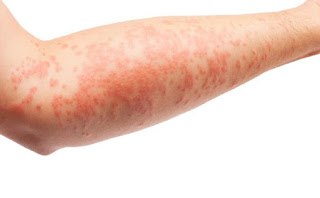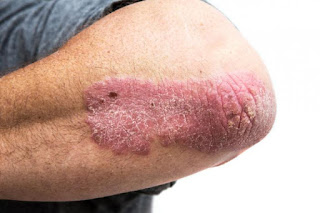While many rashes are nothing to be worried about, some can signal more serious conditions.
It is important to be able to identify common rashes, understand their causes, and know when to see a doctor about a rash. This article examines some of the most common rashes that can affect people.
Contents of this article:
- Common skin rashes
- Common causes
- When to see a doctor
Common skin rashes
Acne
The most common type of skin rash is thought to be acne. Most people get acne at some point in their lives, and it is thought to affect 80 percent of 11 to 30-year-olds.
Acne usually develops during the teenage years, causing spots to appear across the face, back, and chest. However, some people also carry the condition over into adulthood - this happens to about 1 in 20 women and 1 in 100 men with acne.
Atopic dermatitis
Another common cause of rash is atopic dermatitis, a form of a condition called eczema.
Children with atopic dermatitis will usually display symptoms, such as dry and scaly patches on the scalp, forehead, and face during their first year of life. These scaly patches may also "bubble up" and weep fluid. Another unpleasant aspect of atopic dermatitis is a persistent and sometimes debilitating itching sensation.

Atopic dermatitis, a form of eczema, usually develops in early childhood. In adults, itching can be severe and may damage the skin.
If symptoms of atopic dermatitis appear later in childhood, the rash may begin in the creases of the elbows or knees. It also sometimes appears on the:
- neck
- wrists
- ankles
- between the buttocks and legs
Later, the skin may appear bumpy, discolored, or leathery.
About 90 percent of all patients with atopic dermatitis first develop symptoms before the age of 5. Adult atopic dermatitis may cover much of the body and can be especially noticeable on the neck and face. Itching can be severe in cases of adult-onset atopic dermatitis and the damage to the skin may lead to infections.
Some people who have atopic dermatitis in childhood may later grow out of it. However, it is common for people who have "grown out" of having atopic dermatitis to continue experiencing dry skin or eczema on their hands or eyelids. Their skin may be also easily irritated.
Hives
About 20 percent of people get hives, also known as urticarial, at some point in their lives. Hives appear as raised, itchy bumps that resemble large insect bites.
Hives can appear on any part of the body, and it is common for the affected areas to "move around" or disappear and reappear. Hives can last for a short period, but in chronic cases, hives may last for more than 6 weeks.
Infections
A bacterial infection of the dermis - the deep layer of the skin - can cause cellulitis, which is signaled by a hot, swollen, painful, red rash. People with cellulitis may also experience fever, chills, nausea, and shivering.
If the infection just affects hair follicles rather than entering the skin, this condition is known as folliculitis. Folliculitis appears as pimples surrounding individual hair follicles.
Psoriasis

Psoriasis usually develops between the ages of 15 and 35, but can also affect children and older adults.
Psoriasis is an immune disease that causes raised, red, scaly patches to develop on the skin. People usually develop psoriasis between the ages of 15 and 35. About 10-15 percent of people with psoriasis first develop symptoms before the age of 10. Rarely, it may also affect infants.
Keloids
A type of raised scar called a keloid can sometimes look like a rash. Doctors are not sure why some people's skin scars in this way.
Actinic keratosis
Actinic keratosis is a crusty, scaly growth that results from damage caused by exposure to ultraviolet radiation, often from the sun or indoor tanning.
It often appears on areas of the body that has been exposed to sun or an indoor tanning bed, such as the face, scalp, ears, shoulders, neck, and back of the hands. The growths sometimes resemble wartsand are rough and sandpapery in texture.
Common causes
Having a family history of psoriasis, asthma, or hay fever may influence a person's risk of developing atopic dermatitis.
About 50 percent of people with severe atopic dermatitis also have asthma, and about 66 percent also have hay fever. Studies have also found an association between atopic dermatitis and living in a developed country with high levels of pollution.
Hives can be triggered by exposure to some foods - such as peanuts, eggs, nuts, and shellfish - and medicines, such as antibiotics, aspirin, and ibuprofen.
Other possible triggers of hives include:
- insect stings or bites
- blood transfusions
- bacterial and viral infections
- exposure to latex, pet dander, pollen, poison oak, or poison ivy
People with a weakened immune system, diabetes, swelling in the legs, circulation problems, skin infections, and people who inject illegal drugs are at increased risk of cellulitis.
Keloids can be caused by anything that causes a scar, such as cuts, burns, puncture wounds, piercings, tattoos, and severe acne. In the United States, keloids are more common in African-Americans and Hispanic Americans than white people.
About one-third of people with psoriasis have a family member who also has the disease. Experts think that a combination of genes and being exposed to external factors, such as stress, skin injury, infection, and some medications may cause psoriasis.
When to see a doctor
There are several over-the-counter treatments available for acne. Anyone who has no success with these options may want to consult their doctor. There are some prescription-only treatments that may be effective.
 |
| A doctor that specializes in skin conditions should be consulted if over-the-counter medications are not working, or if a person suspects they have cellulitis |
People with eczema should also see a doctor if the treatments they have been using are not working.
People who have had hives for more than 24 hours should see an allergist. This expert will perform a physical exam and may use skin tests or blood tests to determine the cause of the symptoms.
Antihistamines are usually effective at easing the symptoms of hives. However, if the cause of the hives can be identified, the best treatment is to avoid that trigger. Stopping eating foods that may cause the hives, or notifying a doctor if a medicine may be causing the hives, can help treat this rash.
People with cellulitis should contact their doctor immediately. The doctor may prescribe antibiotics, which are nearly always an effective treatment for cellulitis.
People with keloids should see their doctor if they are bothersome or causing significant social problems depending upon where they are.
If left untreated, actinic keratosis lesions can develop into skin cancer, although this is rare. A person who has these growths should always get them checked out by a doctor.
There are no tests to diagnose psoriasis, but a doctor who specializes in skin conditions can usually diagnose the condition based on a physical exam.



















